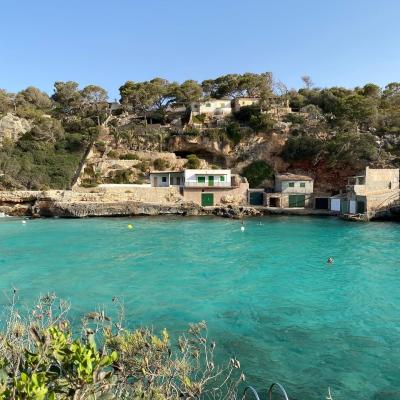Which wildlife species in Mallorca rely on white poplar trees for habitat or food?
Similar Topics
white poplar trees
mallorca wildlife
riparian habitat
bird species mallorca
european robin habitat
insect food source
small mammals shelter
ecological biodiversity
White poplar trees (Populus alba) are a notable component of Mallorca's riparian and wetland environments, providing essential habitat and food sources for a variety of wildlife species. These trees are especially important in regions where freshwater is abundant, such as along streams, riverbanks, and wetlands. Their broad leaves and dense canopy offer shelter to numerous bird species, while their bark and seeds provide food and breeding grounds for insects that form part of the local ecological web.
Bird species that frequent white poplar trees include the European robin, Sardinian warbler, and the common nightingale, all of which utilize the trees for nesting and shelter. Additionally, the dense foliage offers a protective environment for small mammals like the European hedgehog and various bat species, which roost in the tree cavities or use the trees as hunting grounds for insects. The white poplar's seeds and catkins attract a range of insects, including butterflies and moths, which in turn support insectivorous birds and bats, demonstrating the tree’s role as an integral part of the food chain.
Among the invertebrates, certain beetles and caterpillars specialize in feeding on the leaves and wood of white poplar, contributing to nutrient cycling within the ecosystem. These insects not only sustain populations of birds and small mammals but also help maintain the health of the tree itself by facilitating decomposition and soil enrichment. Overall, white poplars contribute significantly to the biodiversity of Mallorca by supporting a dynamic habitat where many interdependent species thrive.
In summary, white poplar trees serve as vital ecological hubs in Mallorca's natural landscapes. Their presence ensures a stable habitat for birds, bats, small mammals, and a variety of insects, thereby maintaining the balance of the island’s ecosystems. Travelers interested in Mallorca’s wildlife will find that exploring areas rich with white poplars offers an excellent opportunity to observe this interconnected tapestry of life.
Bird species that frequent white poplar trees include the European robin, Sardinian warbler, and the common nightingale, all of which utilize the trees for nesting and shelter. Additionally, the dense foliage offers a protective environment for small mammals like the European hedgehog and various bat species, which roost in the tree cavities or use the trees as hunting grounds for insects. The white poplar's seeds and catkins attract a range of insects, including butterflies and moths, which in turn support insectivorous birds and bats, demonstrating the tree’s role as an integral part of the food chain.
Among the invertebrates, certain beetles and caterpillars specialize in feeding on the leaves and wood of white poplar, contributing to nutrient cycling within the ecosystem. These insects not only sustain populations of birds and small mammals but also help maintain the health of the tree itself by facilitating decomposition and soil enrichment. Overall, white poplars contribute significantly to the biodiversity of Mallorca by supporting a dynamic habitat where many interdependent species thrive.
In summary, white poplar trees serve as vital ecological hubs in Mallorca's natural landscapes. Their presence ensures a stable habitat for birds, bats, small mammals, and a variety of insects, thereby maintaining the balance of the island’s ecosystems. Travelers interested in Mallorca’s wildlife will find that exploring areas rich with white poplars offers an excellent opportunity to observe this interconnected tapestry of life.
🧩 Related Questions
Related Question
What are some of the most unique endemic species that travelers can observe in Mallorca?
Related Question
Can snorkeling or diving be safely enjoyed at beaches in Mallorca with strong or unpredictable currents?
Related Question
What makes the Tramuntana mountain range a UNESCO World Heritage site for nature lovers?
